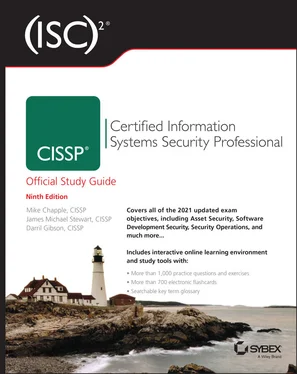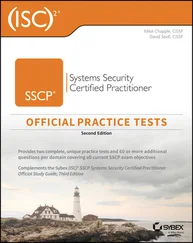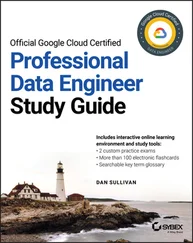It is the responsibility of upper management to initiate and support risk analysis and assessment by defining the scope and purpose of the endeavor. All risk assessments, results, decisions, and outcomes must be understood and approved by upper management as an element in providing prudent due care/due diligence.
All IT systems have risk. All organizations have risk. Every task performed by a worker has risk. There is no way to eliminate 100 percent of all risks. Instead, upper management must decide which risks are acceptable and which are not. Determining which risks are acceptable requires detailed and complex asset and risk assessments, as well as a thorough understanding of the organization's budget, internal expertise and experience, business conditions, and many other internal and external factors. What is deemed acceptable to one organization may not be viewed the same way by another. For example, you might think that losing $100 is a significant loss and impact to your monthly personal budget, but the wealthy might not even realize if they lost or wasted hundreds or thousands of dollars. Risk is personal, or at least specific to an organization based on its assets, its threats, its threat agents/actors, and its risk tolerance.
Once an inventory of threats and assets (or assets and threats) is developed, then each asset-threat pairing must be individually evaluated and its related risk calculated or assessed. There are two primary risk assessment methodologies: quantitative and qualitative. Quantitative risk analysis assigns real dollar figures to the loss of an asset and is based on mathematical calculations. Qualitative risk analysis assigns subjective and intangible values to the loss of an asset and takes into account perspectives, feelings, intuition, preferences, ideas, and gut reactions. Both methods are necessary for a complete perspective on organizational risk. Most environments employ a hybrid of both risk assessment methodologies in order to gain a balanced view of their security concerns.
The goal of risk assessment is to identify risks (based on asset-threat pairings) and rank them in order of criticality. This risk criticality prioritization is needed in order to guide the organization in optimizing the use of their limited resources on protections against identified risks, from the most significant to those just above the risk acceptance threshold.
The two risk assessment approaches (quantitative and qualitative) can be seen as distinct and separate concepts or endpoints on a sliding scale. As discussed in Chapter 1, a basic probability versus damage 3×3 matrix relies on innate understanding of the assets and threats and relies on a judgment call of the risk analyst to decide whether the likelihood and severity are low, medium, or high. This is likely the simplest form of qualitative assessment. It requires minimum time and effort. However, it if fails to provide the needed clarity or distinction of criticality prioritization, then a more in-depth approach should be undertaken. A 5×5 matrix or even larger could be used. However, each increase in matrix size requires more knowledge, more research, and more time to properly assign a level to probability and severity. At some point, the evaluation shifts from being mostly subjective qualitative to more substantial quantitative.
Another perspective on the two risk assessment approaches is that a qualitative mechanism can be used first to determine whether a detailed and resource/time-expensive quantitative mechanism is necessary. An organization can also perform both approaches and use them to adjust or modify each other; for example, qualitative results can be used to fine-tune quantitative priorities.
Qualitative Risk Analysis
Qualitative risk analysis is more scenario based than it is calculator based. Rather than assigning exact dollar figures to possible losses, you rank threats on a relative scale to evaluate their risks, costs, and effects. Since a purely quantitative risk assessment is not possible, balancing the results of a quantitative analysis is essential. The method of combining quantitative and qualitative analysis into a final assessment of organizational risk is known as hybrid assessment or hybrid analysis . The process of performing qualitative risk analysis involves judgment, intuition, and experience. You can use many techniques to perform qualitative risk analysis:
Brainstorming
Storyboarding
Focus groups
Surveys
Questionnaires
Checklists
One-on-one meetings
Interviews
Scenarios
Delphi technique
Determining which mechanism to employ is based on the culture of the organization and the types of risks and assets involved. It is common for several methods to be employed simultaneously and their results compared and contrasted in the final risk analysis report to upper management. Two of these that you need to be more aware of are scenarios and the Delphi technique.
The basic process for all these mechanisms involves the creation of scenarios. A scenario is a written description of a single major threat. The description focuses on how a threat would be instigated and what effects its occurrence could have on the organization, the IT infrastructure, and specific assets. Generally, the scenarios are limited to one page of text to keep them manageable. For each scenario, several safeguards are described that would completely or partially protect against the major threat discussed in the scenario. The analysis participants then assign to the scenario a threat level, a loss potential, and the advantages of each safeguard. These assignments can be simple—such as High, Medium, and Low, or a basic number scale of 1 to 10—or they can be detailed essay responses. The responses from all participants are then compiled into a single report that is presented to upper management. For examples of reference ratings and levels, please see Tables D-3, D-4, D-5, D-6, and E-4 in NIST SP 800-30 Rev.1:
csrc.nist.gov/publications/detail/sp/800-30/rev-1/final
The usefulness and validity of a qualitative risk analysis improves as the number and diversity of the participants in the evaluation increases. Whenever possible, include one or more people from each level of the organizational hierarchy, from upper management to end user. It is also important to include a cross-section from each major department, division, office, or branch.
The Delphi technique is probably the primary mechanism on the previous list that is not immediately recognizable and understood. The Delphi technique is simply an anonymous feedback-and-response process used to enable a group to reach an anonymous consensus. Its primary purpose is to elicit honest and uninfluenced responses from all participants. The participants are usually gathered into a single meeting room. To each request for feedback, each participant writes down their response on paper or through digital messaging services anonymously. The results are compiled and presented to the group for evaluation. The process is repeated until a consensus is reached. The goal or purpose of the Delphi technique is to facilitate the evaluation of ideas, concepts, and solutions on their own merit without the discrimination that often occurs based on who the idea comes from.
Quantitative Risk Analysis
The quantitative method results in concrete probability indications or a numeric indication of relative risk potential. That means the end result is a report that has dollar figures for levels of risk, potential loss, cost of countermeasures, and value of safeguards. This report is usually fairly easy to understand, especially for anyone with knowledge of spreadsheets and budget reports. Think of quantitative analysis as the act of assigning a quantity to risk—in other words, placing a dollar figure on each asset and threat impact. However, a purely quantitative analysis is not sufficient—not all elements and aspects of the analysis can be accurately quantified because some are qualitative, subjective, or intangible.
Читать дальше












